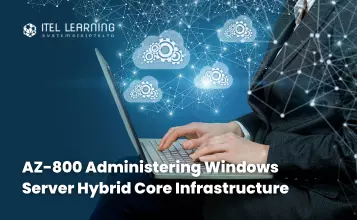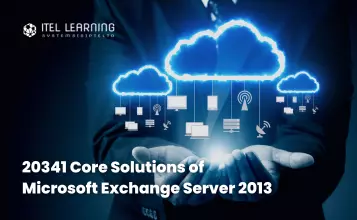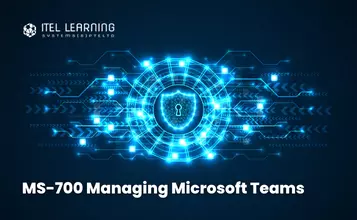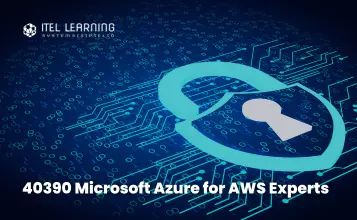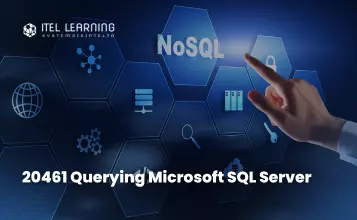Overview
This course teaches IT Professionals how to manage core Windows Server workloads and services using on-premises, hybrid, and cloud technologies. The course teaches IT Professionals how to implement and manage on-premises and hybrid solutions such as identity, management, compute, networking, and storage in a Windows Server hybrid environment.
Prerequisites
Before attending this course, students must have:
- Experience with managing Windows Server operating system and Windows Server workloads in on-premises scenarios, including AD DS, DNS, DFS, Hyper-V, and File and Storage Services
- Experience with common Windows Server management tools (implied in the first prerequisite).
- Basic knowledge of core Microsoft compute, storage, networking, and virtualization technologies (implied in the first prerequisite).
- Experience and an understanding of core networking technologies such as IP addressing, name resolution, and Dynamic Host Configuration Protocol (DHCP)
- Experience working with and an understanding of Microsoft Hyper-V and basic server virtualization concepts
- Basic experience with implementing and managing IaaS services in Microsoft Azure
- Basic knowledge of Azure Active Directory
- Experience working hands-on with Windows client operating systems such as Windows 10 or Windows 11
- Basic experience with Windows PowerShell
Course Duration
4 Days
Course Outline
- Define AD DS
- Define users, groups, and computers
- Define AD DS forests and domains
- Define OUs
- Manage objects and their properties in AD DS
- Deploy AD DS domain controller
- Maintain AD DS domain controllers
- Manage the AD DS Global Catalog role
- Manage AD DS operations masters
- Manage AD DS schema
- Define GPOs
- Implement GPO scope and inheritance
- Define domain-based GPOs
- Create and configure a domain-based GPO
- Define GPO storage
- Define administrative templates
- Create trust relationships
- Implement ESAE forests
- Monitor and troubleshoot AD DS
- Select an Azure Active Directory integration model
- Plan for Azure Active Directory integration
- Prepare on-premises Active Directory for directory synchronization
- Install and configure directory synchronization with Azure Active Directory Connect
- Implement Seamless Single Sign-On
- Enable Azure Active Directory login in for Windows VM in Azure
- Knowledge check 1
- Describe Azure Active Directory Domain Services
- Implement and configure Azure Active Directory Domain Services
- Manage Windows Server 2019 in an Azure Active Directory Domain Services environment
- Create and configure an Azure Active Directory Domain Services instance
- Join a Windows Server VM to a managed domain
- Knowledge check 2
- Select an option to implement directory and identity services using Active Directory Domain Services in Azure
- Deploy and configure Active Directory Domain Services domain controllers in Azure VMs
- Install a replica Active Directory domain controller in an Azure VM
- Install a new Active Directory forest on an Azure VNet
- Define least privilege administration
- Implement delegated privileges
- Use privileged access workstations
- Use jump servers
- Explore Windows Admin Center
- Use Server Manager
- List Remote Server Administration Tools
- Use Windows PowerShell
- Use Windows PowerShell to remotely administer a server
- List the available post-installation configuration tools
- Configure Server Core using Sconfig
- Use DSC to configure Windows Server
- Perform post-installation configuration with Windows Admin Center
- Configure a server with answer files
- Explain the concept of Just Enough Administration (JEA)
- Define role capabilities for a JEA endpoint
- Create a session configuration file to register a JEA endpoint
- Describe how JEA endpoints work to limit access to a PowerShell session
- Create and connect to a JEA endpoint
- Demonstration: Connect to a JEA endpoint
- Select the appropriate remote administration tool
- Manage Windows Virtual Machines with Azure Bastion
- Create an Azure Bastion host
- Configure just-in-time administration
- Describe Azure Arc
- Onboard Windows Server instances
- Connect hybrid machines to Azure from the Azure portal
- Usee Azure Arc to manage Windows Server instances
- Restrict access with RBAC
- Define Hyper-V
- Define Hyper-V Manager
- Configure Hyper-V hosts using best practices
- Configure Hyper-V networking
- Assess advanced Hyper-V networking features
- Define nested virtualization
- List the virtual machine configuration versions
- List the virtual machine generation versions
- List available VHD formats and types
- Create and configure VMs
- Determine storage options for VMs
- Define shared VHDs and VHD Sets
- Implement guest clusters using shared VHDX
- Define guarded fabric
- Define the Host Guardian Service
- Explore TPM-trusted attestation
- Define KPS
- Determine key features of shielded VMs
- Compare encryption-supported and shielded VMs in a guarded fabric
- Define containers
- List the differences between containers and VMs
- Define Windows Server and Hyper-V containers and isolation modes
- Explore Docker
- Prepare a Windows Server 2019 host for container deployment
- Security, Storage, and Networking with Windows containers
- Define orchestration
- Define Kubernetes
- Deploy Kubernetes resources
- Create a Kubernetes cluster on Windows
- Define Azure Arc
- Connect an Azure Arc-enabled Kubernetes cluster to Azure Arc
- Describe Azure compute
- Describe Virtual Machine storage
- Deploy Azure Virtual Machines
- Create a windows Virtual Machine using the portal
- Create a windows Virtual Machine using Azure CLI
- Deploy Azure Virtual Machines using templates
- Create a generalized image
- Create a new Virtual Machine from a managed image
- Create a managed image of a generalized virtual machine in Azure
- Create a Virtual Machine from a manage image
- Implement Azure Image Builder
- Create a windows Virtual Machine using Azure Image Builder template
- Create a Windows Virtual Machine with Azure Image Builder using PowerShell
- Running Azure in your datacenter
- Capacity planning considerations
- Choose an identity provider
- Connection models
- Licensing model
- Naming decisions
- Certificate requirements
- Connect Azure Stack Hub to Azure
- Hybrid connectivity options
- Using ExpressRoute
- External monitoring
- Back up and disaster recovery
- Describe Azure Automation
- Implement Azure Automation with DSC
- Remediate noncompliant servers
- Describe Custom Script Extensions
- Configure a Virtual Machine by using DSC
- Use DHCP to simplify IP configuration
- Install and configure DHCP role
- Configure DHCP options
- Configure DHCP scopes
- Select DHCP high availability options
- Implement DHCP Failover
- Explore the DNS architecture
- Work with DNS zones and records
- Install and configure the DNS role
- Implement DNS forwarding
- Define IP Address Management
- Deploy IP Address Management
- Administer IP Address Management
- Configure IP Address Management options
- Manage DNS zones with IP Address Management
- Manage DHCP servers with IP Address Management
- Use IP Address Management to manage IP addressing
- Examine the remote access options in Windows Server
- Select and set up VPNs
- Use NPS to create and enforce network access policies
- Plan and implement NPS
- Deploy a PKI for remote access
- Use WAP as a reverse web proxy
- Describe Azure network topologies
- Implement Azure VPN options
- Create a route-based VPN gateway using the Azure portal
- Implement Azure ExpressRoute
- Configure Azure Virtual WAN
- Implement DNS in hybrid environments
- Understand Azure DNS
- Implement Azure DNS
- Create an Azure DNS zone and record using the Azure portal
- Implement DNS with Azure IaaS virtual machines
- Implement split-horizon DNS in Azure
- Troubleshoot DNS
- Implement a virtual network
- Implement IaaS VM IP addressing
- Assign and manage IP addresses
- Configure a private IP address for a virtual machine using the Azure portal
- Create a virtual machine with a static public IP address using the Azure portal
- Implement IaaS virtual machine IP routing
- Implement IPv6 for Windows Server IaaS virtual machines
- Define the Windows Server file system
- List the benefits and uses of File Server Resource Manager
- Define SMB and its security considerations
- Configure SMB protocol
- Define Volume Shadow Copy Service
- Define the Storage Spaces architecture and its components
- List the functionalities, benefits, and use cases of Storage Spaces
- Implement Storage Spaces
- List the functionalities, components, benefits, and use cases of Storage Spaces Direct
- Implement Storage Space Direct
- Define the architecture, components, and functionality of Data Deduplication
- Define the use cases and interoperability of Data Deduplication
- Implement Data Deduplication
- Manage and maintain Data Deduplication
- List the functionalities, components, and use cases of iSCSI
- List the considerations for implement iSCSI
- Implement iSCSI
- Configure high availability for iSCSI
- List the functionalities and components of Storage Replica
- Examine the prerequisites for implementing Storage Replice
- Implement Storage Replica by using Windows Admin Center
- Implement Storage Replica by using Windows PowerShell
- Describe Azure File services
- Configure Azure Files
- Configure connectivity to Azure Files
- Describe Azure File Sync
- Implement Azure File Sync
- Deploy Azure File Sync
- Deploy Azure File Sync 2
- Manage cloud tiering
- Migrate from DFSR to Azure File Sync
